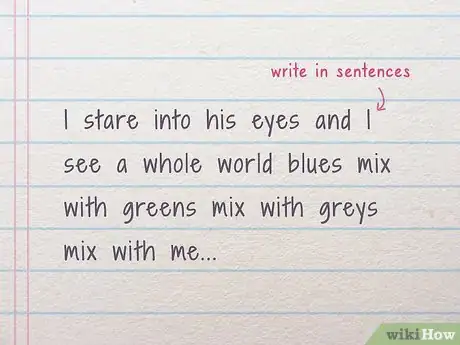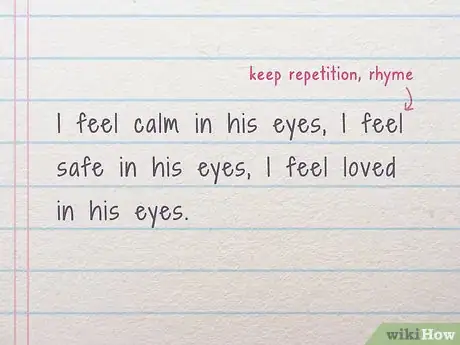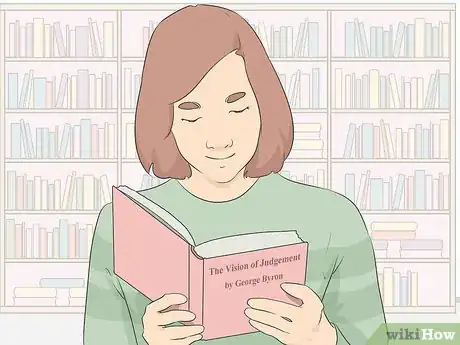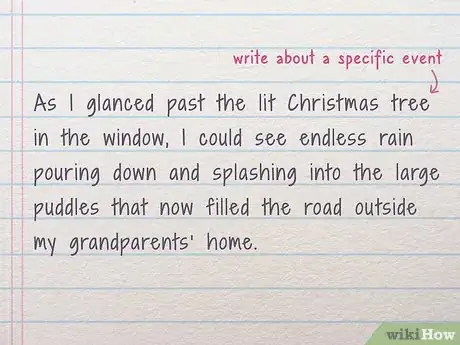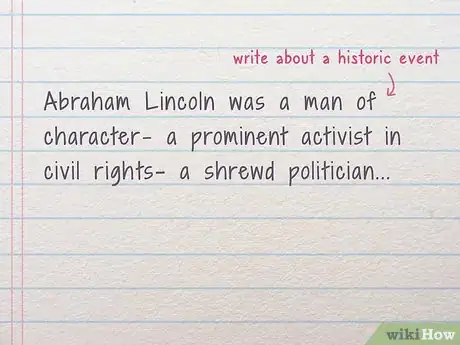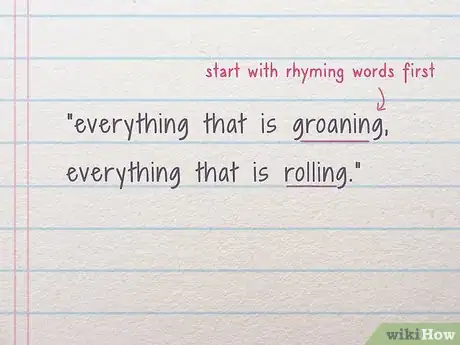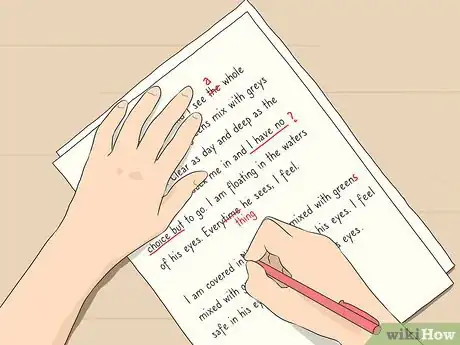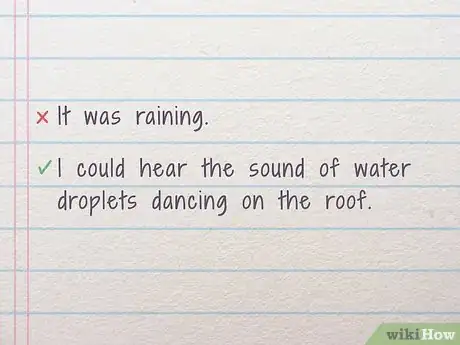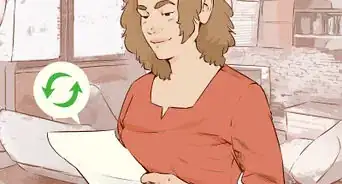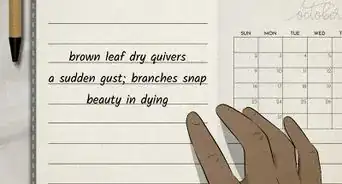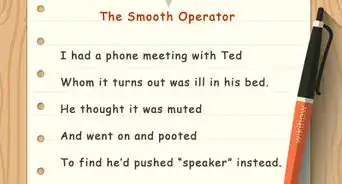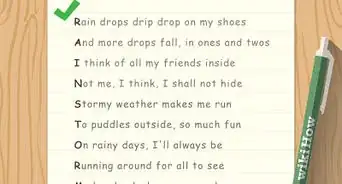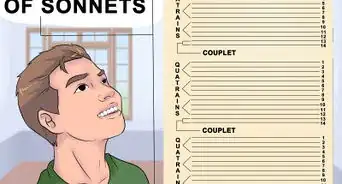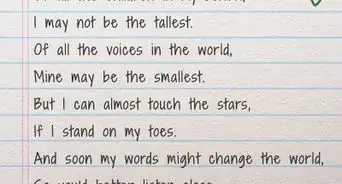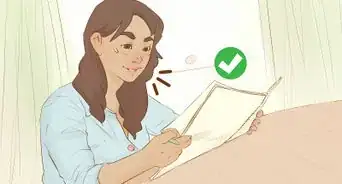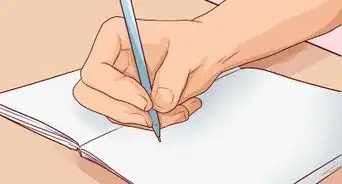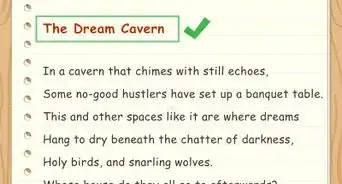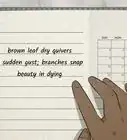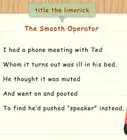This article was co-authored by wikiHow staff writer, Hannah Madden. Hannah Madden is a writer, editor, and artist currently living in Portland, Oregon. In 2018, she graduated from Portland State University with a B.S. in Environmental Studies. Hannah enjoys writing articles about conservation, sustainability, and eco-friendly products. When she isn’t writing, you can find Hannah working on hand embroidery projects and listening to music.
There are 9 references cited in this article, which can be found at the bottom of the page.
wikiHow marks an article as reader-approved once it receives enough positive feedback. In this case, 90% of readers who voted found the article helpful, earning it our reader-approved status.
This article has been viewed 32,414 times.
Learn more...
Prose poems are a style of poetry that straddle the line between the normal written word and the art of poetry. They are the most fluid form and can take on many shapes and ideas depending on what message you would like to send with your poems. If you’d like to start writing prose poetry but don’t know how to begin, all you need to do is pick a topic, write in full sentences, and not use line breaks. Soon, you’ll be able to write prose poetry like an expert.
Steps
Key Rules
-
1Write in sentences. Typically, prose poems are written in sentence form. Your sentences can be fragmented or run-on sentences, and they can be as long or as short as you want them to be. In fact, prose poetry often uses very long run-on sentences.[1]
- In poetry, “sentence” is a relative term. Sentences can even be as short as one word. Try to keep your grammar rules loose when writing any form of poetry.
-
2Don’t use line breaks. The main feature of a prose poem is that it does not use line breaks. Your poem will look like a paragraph instead of a stereotypical poem. Prose poems can be as long or as short as you want them to be, and you can break up your paragraphs into new paragraphs.[2]
- Prose poetry can often be mistaken for short stories, although the writing style is slightly less factual and more poetic.
Advertisement -
3Keep repetition, rhyme, and other common poetry features. Although prose poems are different from typical poetry in that they do not have line breaks, they can still feature techniques like rhyming, repetition, and sentence fragmentation. All of these features are optional and you can use some, all, or none of them in your poetry. Think of a prose poem like a poem that is in a block form. It should still flow and create images in the reader’s mind, just in a chunk of text.[3]
Tip: If you’ve never written poetry before, prose poems are a great place to start learning about it.
-
4Look at examples of prose poetry. The best way to learn about prose poetry is to see other people’s work. Prose poetry has been around since the 19th century, so there is plenty of it to discover. Try looking at some famous examples of prose poetry, like “The Vision of Judgement” by George Byron, or “Dickinson Poems by Number” by Emily Dickinson.[4]
- Prose poetry can look like many different things, so try not to get boxed in by looking at examples.
Subject Choice
-
1Write about a specific event to capture a moment in time. Prose poems work well for telling stories. You can write a narrative about a moment in your life that was impactful to you in a way that will resonate with others.[5]
- Try writing about the first birthday you can remember, or your first day of school.
Tip: This can be a good way to practice descriptions and relaying certain moments and feelings to others.
-
2Create a poem addressed to one person to convey your feelings toward them. Sometimes, writing to a specific person can help get your message across. You can even address your poem like a letter, as long as you don’t use any line breaks. Write your prose poem as if you were speaking to a friend or family member and tell them a happy memory, an emotion you are feeling, or a grievance you’d like to get off your chest.[6]
Tip: This is an easy way to start diving into prose poetry if you need inspiration, since you’ve probably written at least one letter in your life.
-
3Write about a historic event if you know a lot about it. If you need inspiration, try writing about a historic event. This could be something that happened in the recent past or thousands of years ago. Choose something that you know a little bit about, or do some research to find out what you could potentially create a poem about.
- Try writing about the Civil War, or the Civil Rights Movement.
- If you are a history buff, this would be a particularly fun project.
- Feel free to insert yourself into the historical event, or imagine what it would have been like to be there.
-
4Create a narrative about a specific object if you have an emotional connection to it. A lot of poetry is centered around nature. You could write an entire prose poem on one tree, one branch, or even one leaf. Or, you could keep it indoors and write about an object that you use every day, like your kitchen sink or your hairbrush.[7]
- You can try talking to the object, or telling other people about how much it means to you. Try an object that you have an emotional connection with as an easy place to start.
Your Poem
-
1Start with rhyming words first. If you want to have words that are rhyming in your poem, you should plan out which one you want to start with and where you’d like it to go. Most often, rhyming words are at the end of sentences.[8]
- Try to choose short words that are easy to rhyme with.
- For example, “Be Drunk” by Charles Baudelaire has a line in it that goes, “everything that is groaning, everything that is rolling.”
-
2Write your entire poem, then revise. When you are writing a poem, it is usually helpful to put all of the words on the page before you start critiquing them. Write down everything that you want to say and use it as a first draft. After that, you can read through what you’ve written and remove or add whatever you want. You can have many drafts, or just 2 or 3.[9]
-
3Use descriptive words. Poetry is all about getting a reader to see what you see. Make sure to describe people, places, things, and actions with words that convey the message you are trying to get across.[10]
Examples of descriptive sentences
Instead of saying “it was raining,” try saying something like, “I could hear the sound of water droplets dancing on the roof.”
Instead of saying “the sun was out,” try saying something like, “the heat of the day pushed against the window.”
References
- ↑ https://poets.org/text/prose-poem-poetic-form
- ↑ https://www.readwritethink.org/sites/default/files/resources/p-as_docs/PoetryandProse.pdf
- ↑ https://poets.org/text/prose-poem-poetic-form
- ↑ https://www.poetrysoup.com/famous/poems/prose
- ↑ https://diymfa.com/writing/poets-revolt-brief-guide-prose-poem
- ↑ https://www.powerpoetry.org/actions/5-tips-writing-letter-poetry
- ↑ https://opentextbc.ca/writingforsuccess/chapter/chapter-4-what-are-you-writing-to-whom-and-how-2/
- ↑ https://www.theguardian.com/childrens-books-site/2016/jul/01/how-to-write-rollicking-rhyming-stories-pip-jones-squishy-mcfluff
- ↑ https://www.grammarly.com/blog/how-to-write-a-poem/
